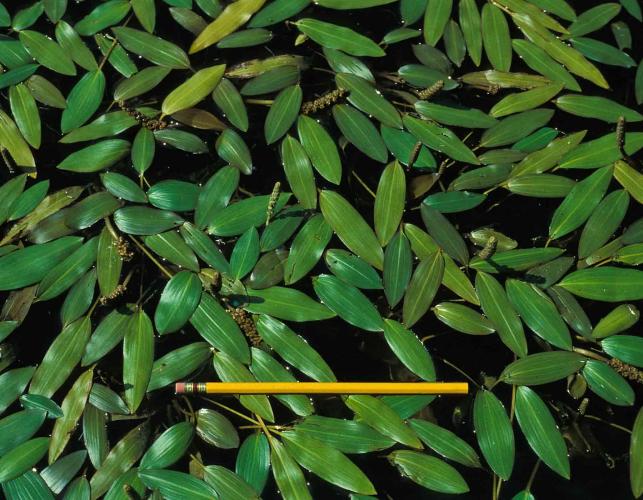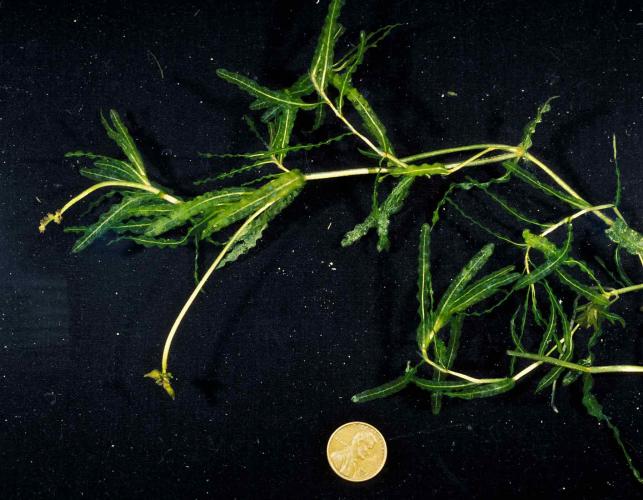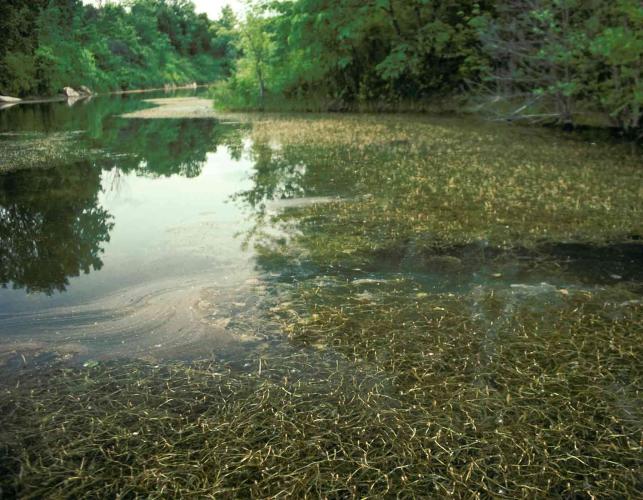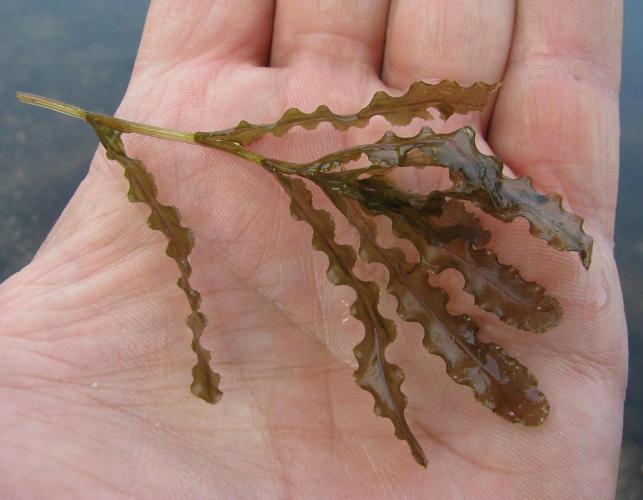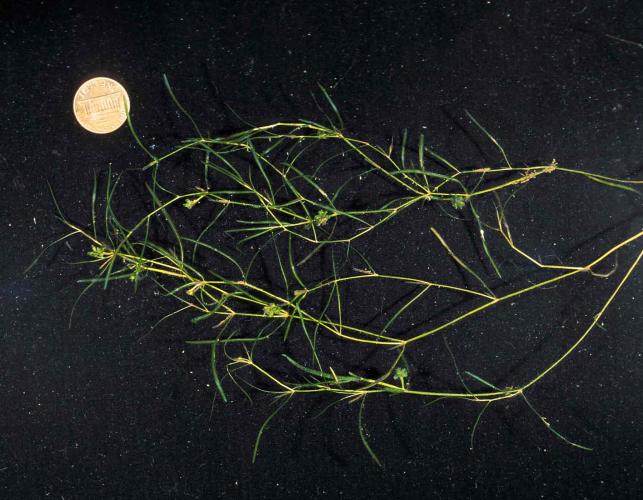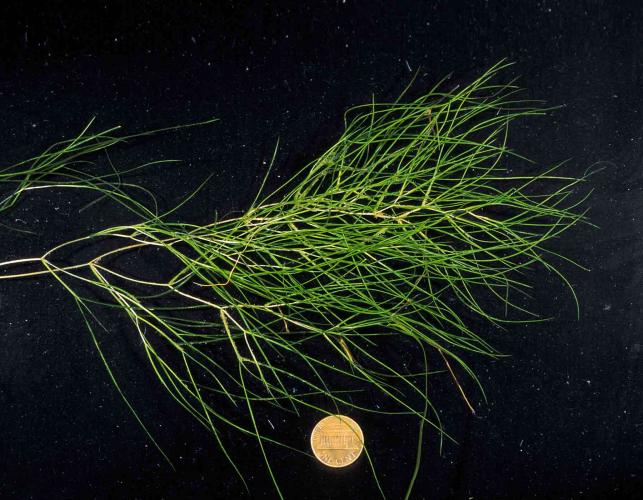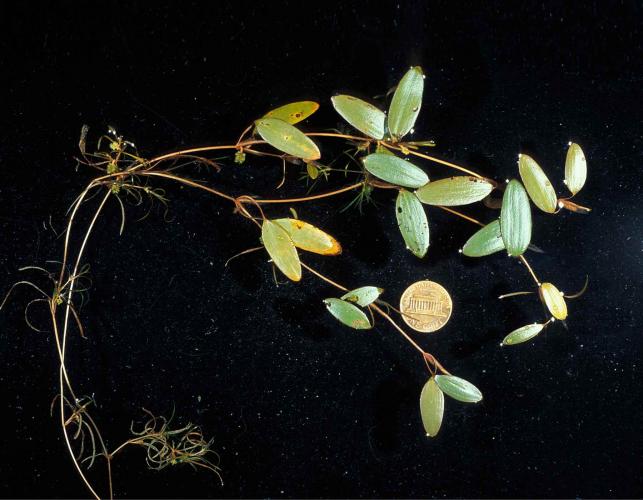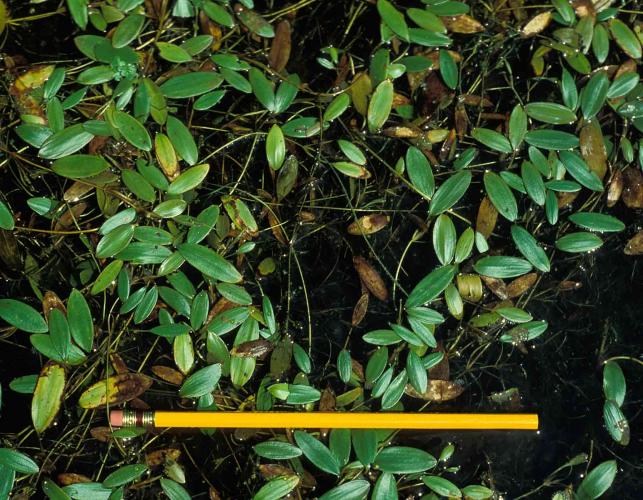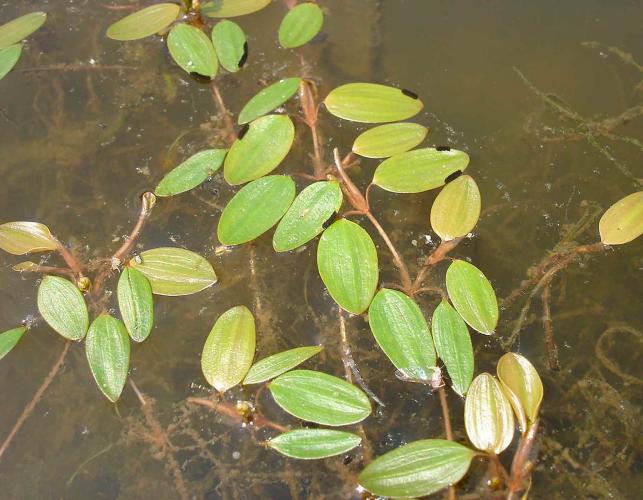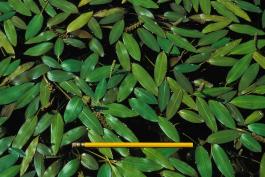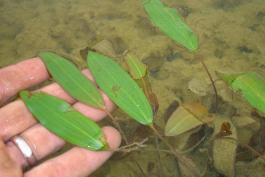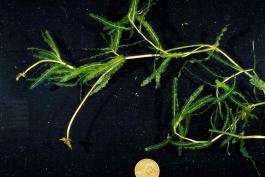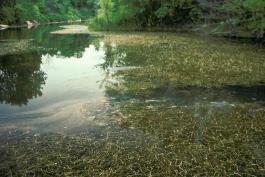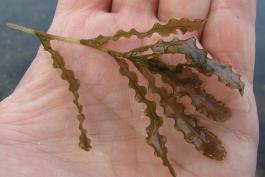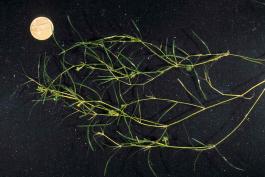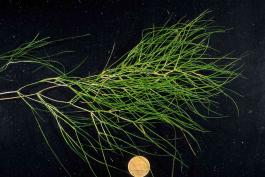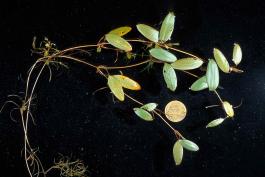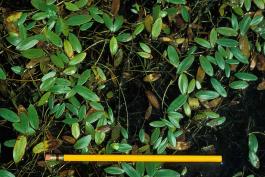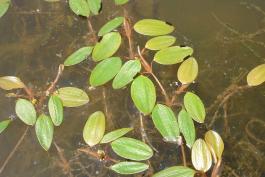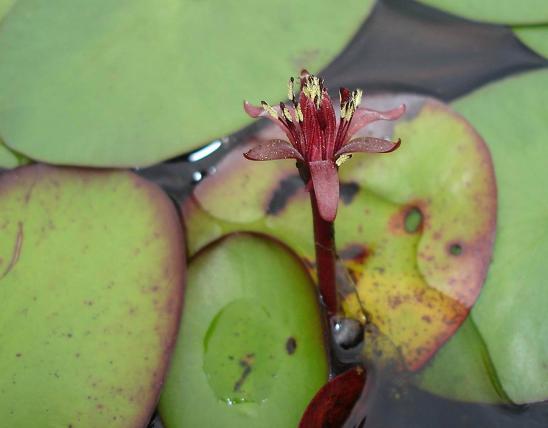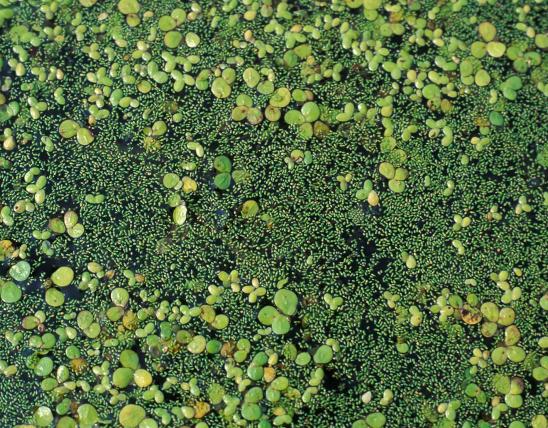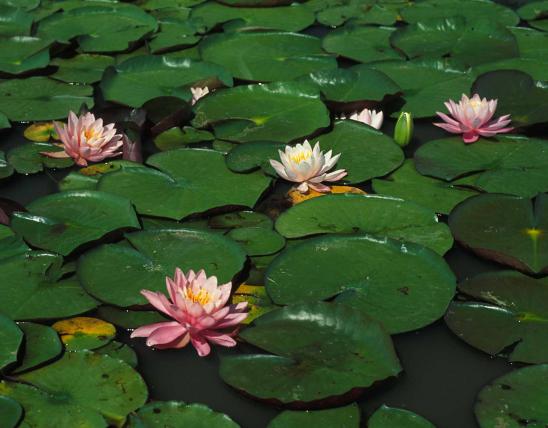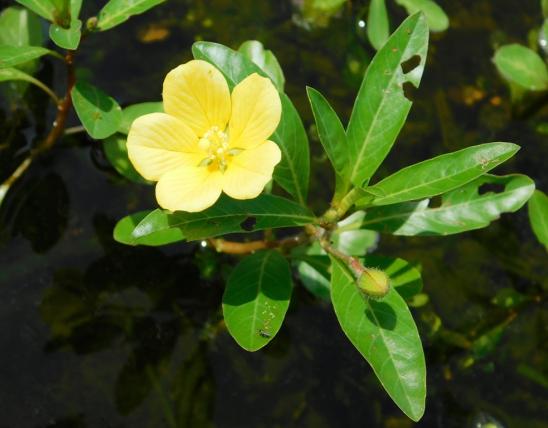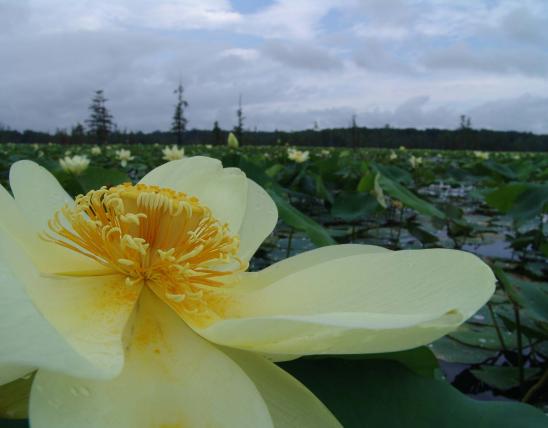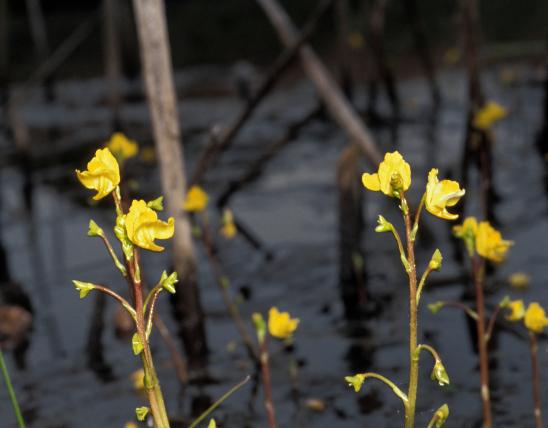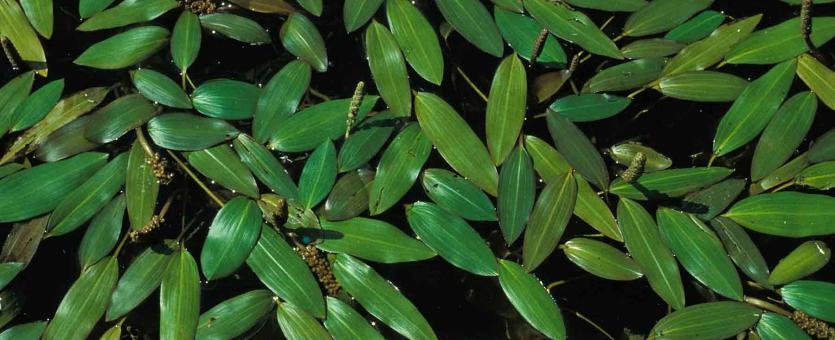
Pondweeds are perennials with underwater leaves scattered on long (to 6 feet), flexible, jointed stems that are rooted to the bottom. Some also have floating leaves that are different from the submerged ones. Among the species, the leaves range from large, round, and leathery to small, needlelike, and delicate. The small, greenish flowers are borne on a spike that extends above the water for wind pollination, then sinks below the surface. Pondweeds can spread by rhizomes (modified underground stems), winter buds, seeds, or fragmentation (“cuttings”), depending on the species.
Missouri has about 10 species of pondweeds. Potamogeton, the genus name, is pronounced “PO-tuh-mo-GHEE-tun.”
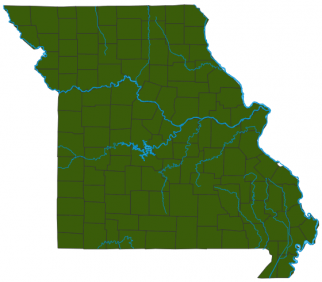
Statewide.
Habitat and Conservation
Pondweeds grow submerged in water, sometimes with floating leaves, with only their flowers rising above the surface. Different species prefer different aquatic habitats. Most grow on the edges of ponds and lakes, up to about 8 feet of water. Some live primarily in streams and cool spring branches; others in marshes, sloughs, and stagnant waters. Some are most common in sinkhole ponds. Some are present in fish hatcheries and manmade ponds. Some are emergent on mudflats.
Status
Some of our native pondweed species are uncommon and scattered. Others can grow rampantly and become nuisance plants in ponds and lakes, particularly waterthread (variable-leaf) pondweed (P. diversifolius), longleaf (American) pondweed (P. nodosus), and leafy pondweed (P. foliosus). Curly pondweed (P. crispus) is an introduced European species that easily spreads by fragmentation and becomes a serious weed in some bodies of water.
Control
Human Connections
Submerged aquatic plants are important nurseries for the tiny aquatic organisms that feed small fish and contribute to a vigorous fish population. Thus anyone who enjoys fishing can appreciate pondweeds. When pondweeds grow excessively, they can require control measures.
Ecosystem Connections
Aquatic plants are the basis of life in a pond or lake. They provide food and shelter for a wide range of aquatic organisms and oxygenate the water. When they grow excessively, it can be due to excessive nutrients entering the water, such as farm and fertilizer runoff or leaky septic systems.
